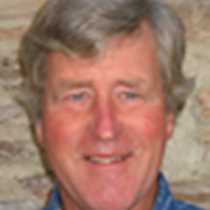Port Lockroy and Gerlache Strait
A warm, still, monochromatic morning awaited as we ventured out from the comfort of our ship this morning. We were anchored close to the shore at Goudier Island, Port Lockroy. During the morning we had the opportunity to visit the historic British station named Bransfield House and close by, just across a narrow channel of water, Jougla Point where there are nesting Gentoo penguins, blue-eyed shags and kelp gulls. There is also much evidence in this area of the whaling that took place 100 years ago. A large pile of whale bones from the unfortunate victims are to be found close to the shore along with heavy, rusty chains and the remains of old wooden boats.
Port Lockroy had been my home for many summers until recently while I had been the manager of this facility for the United Kingdom Antarctic Heritage Trust. I always enjoy retuning to what feels like my second home. Lockroy is now managed by four lively young women who warmly welcome all visitors that descend on this busy outpost. There were four sailing yachts anchored in the sheltered bay behind the Goudier Island when we arrived. Many of their adventurous occupants were ashore enjoying the hospitality and gossip that prevails on the tiny island. It was wonderful catching up on all the news from many of these seasoned campaigners who over the years had become close friends.
There was no doubt that Lockroy was working its magic on all of the guests from our ship as they explored their way round this living museum and visited the unusual gift shop and post office. I never seem to tire of telling the numerous tales associated with my time at this truly unique location. Outside the museum on all available space Gentoo penguins nest. Their chicks were large and plump but still their incessant demand for food seemed insatiable. The large flock of sheathbills that reside on Goudier Island were also doing their best to entertain, ferreting around the penguins and standing around on one leg posing for photographs. Two pairs of these white, pigeon-like birds nest just under the front door of the museum and seem to enjoy the close proximity to the coming and going of visitors. The morning passed in what seemed like a flash.
In the afternoon we started our journey north heading through the Neumayer Channel and out into the Gerlache Strait. The sea was glassy smooth ideal for watching whales and it wasn’t long before we were among numerous humpback whales and a large pod of killer whales. The killer whales were identified by Bob and John, our two whale experts as being type b whales that eat fish and penguins. They think we were looking at around seventy of these whales which spend much of the year here in the Gerlache Strait. Last year they satellite tagged one of these killer whales and have discovered that it swam all the way up to warmer waters off the coast of Brazil, and does this periodically during the year. It is thought they might do this to regenerate their skin and rid themselves of diatoms that infest the outer surface of their body.
By dinnertime this evening we were in a spectacularly beautiful location called Lapeyrére Bay at the northeast corner of Anvers Island. Evening sunshine illuminated the surrounding mountains with warm yellow light. Sadly it was time for us to leave Antarctica behind and head out into the Drake Passage.




